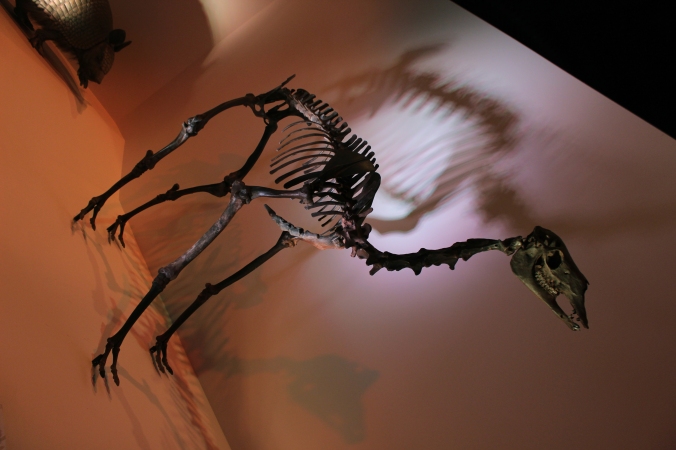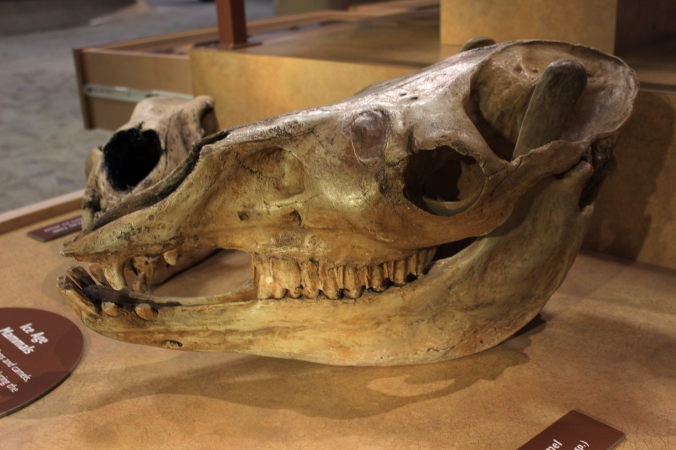What do World War I and II, penguin flippers, heat exhaustion and dehydration, Snowmass ski resort, the inspiration for Indiana Jones, warm-blooded fish, the accidental death of John Ainsworth Horrocks, the neck of the giraffe, luscious eyelashes, and Hawaiian seabirds all have in common? If you thought that they will all be featured in this three-part post about the dromedary camel, then you are correct.
While in Morocco, my friends and I got the chance to ride dromedary camels in the Sahara Desert, an opportunity that I was very excited about. The first thing that struck me as we rode out between the dunes was how barren and inhospitable the place was (which probably seems pretty obvious, but was still surprising to witness). I was, however, surprised at how many large shrubs and bushes could be found fairly frequently, a number I imagine would decrease the further into the desert you get. But even with the surprising amount of shrubbery where we were, it didn’t look like a place that would allow animals as large as a camel to survive. But survive they had, for millions of years, and that was one of the things that interested me the most.

A domesticated dromedary silhouetted against the horizon. The single hump on the back of the animal is plainly visible in this photograph. The related Bactrian camel (Camelus bactrianus) has two humps.
Despite their absence on the continent today, the earliest camels actually evolved in North America, around 35 million years ago (MYA). These small, early camels looked more like modern gazelle than today’s camels, as they were small, slender creatures with sharp hooves to aid in running. Over time, they diversified from their small, goat-sized ancestors to a fantastic array of shapes and sizes, and inhabiting an equally diverse set of biomes, a much greater diversity than we see today. Some evolved similar to modern day gazelle, deer, and pronghorn, adapted for faster running in open areas. Others became huge, larger than modern day camels. Still others found their way northwards, inhabiting the most northern reaches of Canada in the frigid Arctic. It wasn’t until a few million years ago that the camelids found their way outside of North America. In one direction, we see the ancestors of the modern day guanaco, vicuña, alpaca, and llama cross the Isthmus of Panama into South America. Meanwhile, the ancestor of the modern dromedary and Bactrian camels dispersed from Alaska into Russia via the Bering Land Bridge (which humans would later use to cross in the opposite direction).

A mounted fossil skeleton of the extinct camelid Paleolama on display at the Houston Museum of Natural Science in Houston, Texas. Paleolama was a mid-sized North American species that lived during the Ice Age. You can see the resemblance in the overall body plan between Paleolama and the modern dromedary.
Humans would have actually encountered wild camels in North America when they first arrived during the last Ice Age. Even in Colorado, we find the remains of Ice Age camels that would have lived alongside more famous and charismatic megafauna, such as the Columbian mammoth. In 2011, fossil bones of the genus Camelops were unearthed during the massive Ice Age dig at the Snowmass ski resort, discovered in the same layers as the bones of Columbian mammoth, deer, and bison. Although the exact cause of extinction is not entirely certain, there is a growing body of evidence that suggests that many of the large Ice Age mammals were driven to extinction by the arrival of early humans approximately 10,000 years ago, making the Ice Age Camelops another possible casualty of the spread of humanity.*

This is a fossil skull cast of the extinct camelid Camelops, on display at The Living Desert Zoo and Gardens in Palm Desert, California. Check out how large those nasty-looking front teeth are. Unlike deer, camels evolved offensive weapons such as large, sharp teeth to combat potential predators. Even a bite from today’s camels is nothing to joke about.
Even though we typically think of camels as exclusively desert animals, the fossil record shows us that in prehistory, the camel family had become adapted to a wide variety of habitats and niches. The development of a nomadic, desert lifestyle actually appears to be a fairly recent one!
Join us next time, as we investigate an adaptation of the modern camel that helps keep it cool in the desert heat….and helps keeps penguins warm underwater!
* Unfortunately, the investigation is a bit of a COLD CASE. Boom, Ice Age puns.
Well done Zack
LikeLike